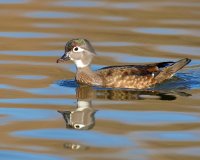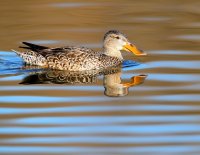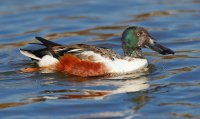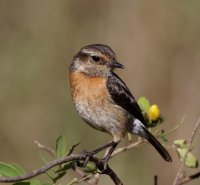I spent two full days shooting some 4,000 images with my Canon 1DX Mark II and my new Canon 600mm f/4 lens with the new 1.4x teleconverter attached most of the time. Both are the latest Canon models. Before doing any photography, I first tested the lens by itself for focus accuracy and then with the 1.4x attached. I set a -1 AF microadjustment when using the 600mm alone, and with the 1.4x, I found +5 AF microadjustment produced sharper focus. To be honest, a -1 AF microadjustment isn't much and I would not notice a problem had I not tested the lens. But, the +5 with the 1.4x attached is significant to me, and the results showed it worked just fine with the adjustments I made. Keep in mind the camera "remembers" the AF microadjustment set with the lens alone, and also with the 1.4x attached. For each of these images, I used manual exposure with continuous autofocus set on the back-button. I am using a Wimberley gimbal head with IS on as the camera/lens is not perfectly still on the gimbal head as you track the subject. Of course, since I am usually panning with the subject, I use mode 2 that only stabilizes in the plane opposite the direction of panning. I use a single AF point and try to keep it right on the face of the subject. When I failed to do that, then my focus was off, but mostly I nailed the focus on about 80% of the images. In this situation, the light is steady most of the time, so I prefer manual exposure as it is simply easier to do. Autoexposure introduces so many problems that I don't have to deal with with manual exposure. Had the light been changing a lot from moment to moment, then I would use an autoexposure mode called Auto ISO.
I have used Canon 500mm lenses for decades, and the 800mm for about ten years. The 500mm did not provide the reach I get with the 600mm, and the 800mm gives me more magnification, but can't focus all that close - about 20 feet. And of course, with the 1.4x on the 600mm, that gives me an effective 840mm f/5.6 lens, so a little more reach than the 800mm and it focuses much closer - something important for small birds. I also have not used a 1.4x, 2x, or any other kind of teleconverter for more than 20 years as the results with my first experiences were dismal all those years ago. Why? The glass just didn't do as well is one reason for the lack of sharp images. Perhaps my shooting technique had a flaw in it. And that was all before AF microadjustments became available in the camera. And even if the camera could do it, I would not have known the need to AF microadjust the autofocus like I do now. Anyway, teleconters were not in my bag for about 3 decades, but now I will always have the 1.4x with me when using the 600mm lens. I am a tough judge on equipment, but I give this 600mm/1.4x version III combo FIVE BIG STARS!!!!! It is a winner.www.gerlachnaturephoto.com


I have used Canon 500mm lenses for decades, and the 800mm for about ten years. The 500mm did not provide the reach I get with the 600mm, and the 800mm gives me more magnification, but can't focus all that close - about 20 feet. And of course, with the 1.4x on the 600mm, that gives me an effective 840mm f/5.6 lens, so a little more reach than the 800mm and it focuses much closer - something important for small birds. I also have not used a 1.4x, 2x, or any other kind of teleconverter for more than 20 years as the results with my first experiences were dismal all those years ago. Why? The glass just didn't do as well is one reason for the lack of sharp images. Perhaps my shooting technique had a flaw in it. And that was all before AF microadjustments became available in the camera. And even if the camera could do it, I would not have known the need to AF microadjust the autofocus like I do now. Anyway, teleconters were not in my bag for about 3 decades, but now I will always have the 1.4x with me when using the 600mm lens. I am a tough judge on equipment, but I give this 600mm/1.4x version III combo FIVE BIG STARS!!!!! It is a winner.www.gerlachnaturephoto.com






